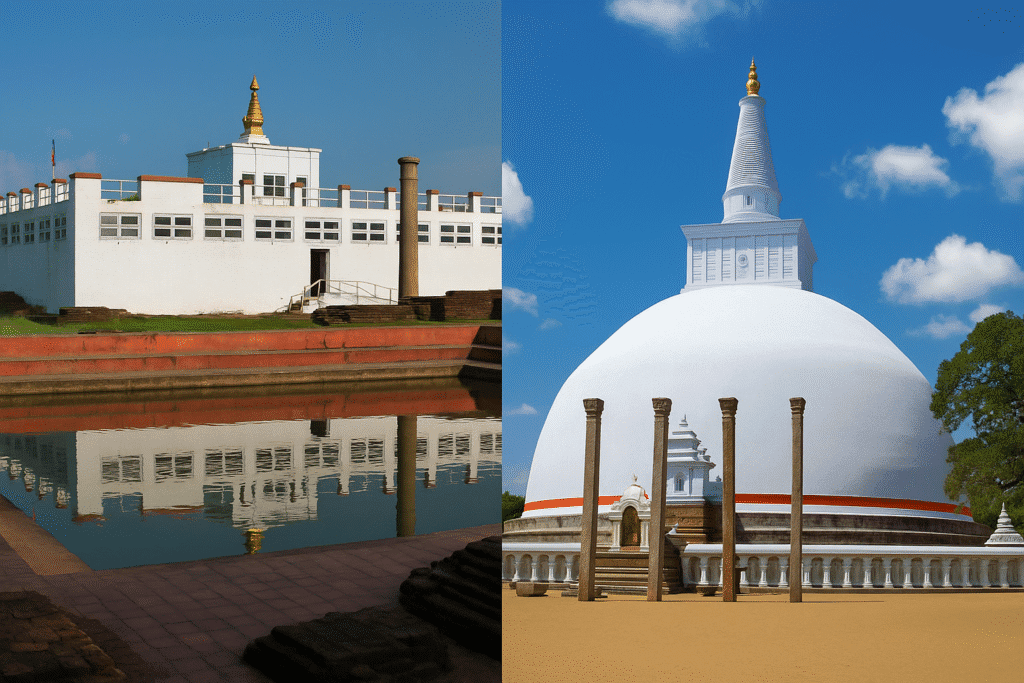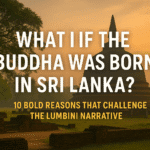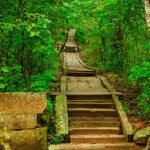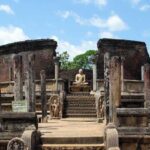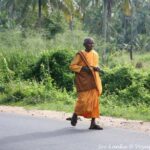Forget what the textbooks say. Hidden clues in Sri Lanka’s ancient texts, archaeology, and landscapes suggest a shocking possibility: Prince Siddhartha’s story might have begun not in Lumbini—but in the heart of Heladiva.
Introduction
Each year, millions of pilgrims journey to Lumbini, Nepal, revering it as the birthplace of the Buddha. But what if history got it wrong?
A compelling and controversial theory—supported by overlooked manuscripts, linguistic evidence, and archaeological oddities—claims that the Buddha may have been born in Sri Lanka, not Nepal.
Is it heresy… or suppressed history? Let’s look at the clues.
1. The Mysterious “Heladiva” Chronicles
Mainstream history leans on Indian Pali sources, but Sri Lanka’s own chronicles—like the Rajavaliya and Saddharmaratnavaliya—tell a different story.
- The Saddharmaratnavaliya (13th century) places Kapilavastu—Prince Siddhartha’s hometown—near the Kelani River , not in Nepal.
- The Mahavansa, Sri Lanka’s “Great Chronicle,” records that the Buddha visited the island three times—could one have been a return home?
🕊️ Why it matters: If Kapilavastu was in Sri Lanka, the entire Buddhist origin story shifts.
2. Ashoka’s Pillar in Lumbini: A Political Rewrite?
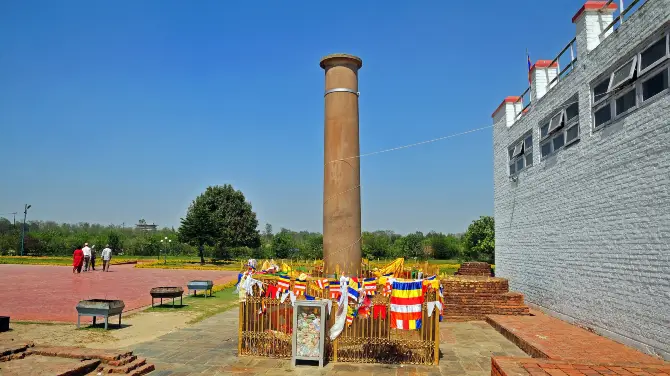
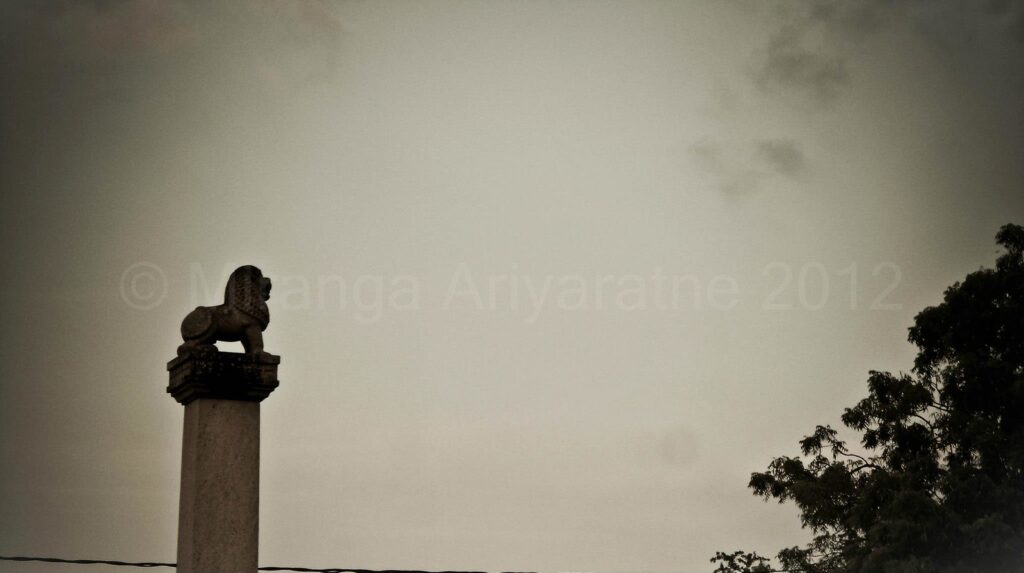
Disclaimer: Image sourced via Google Images. All rights belong to the respective copyright holders. If you are the owner of this image and would like it removed or properly credited, please contact us.
Left: Ashok pillar Lumbini Nepal Right: Sinhakanuwa Lion pillar (Modern build) Anuradhapura Sri Lanka
The strongest evidence for Nepal’s Lumbini is the Ashokan pillar from the 3rd century BCE. But there are questions:
- By Ashoka’s time, Sri Lanka’s Anuradhapura already had vast stupas like Thuparamaya and Ruwanwelisaya.
- Curiously, there are no Ashokan pillars in Sri Lanka—perhaps because he didn’t need to “claim” it?
- Could Ashoka have reshaped the narrative to center Buddhism within his own empire?
Mainstream history points to a stone pillar in Lumbini, Nepal, as proof of the Buddha’s birthplace. But there’s a problem.
Ancient monk accounts describe the Ashokan pillar as four-sided, topped with a lion. The actual Lumbini pillar is cylindrical, and its capital is an elephant, not a lion—more in line with the Sankissa pillar, not Sarnath or Lumbini.
To complicate matters, the pillar in Lumbini was “discovered” in 1896 by Alois Anton Führer, a German archaeologist later found guilty of forging inscriptions and falsifying discoveries.
🧠 This calls into question the authenticity of the Lumbini pillar, and whether it was used—intentionally or not—to reinforce a politically accepted origin story.
Citation: Allen, Charles. The Buddha and the Sahibs. John Murray Press, 2002.
3. The Jataka Tales Mirror Sri Lanka, Not Nepal
The Jataka tales, which recount the Buddha’s past lives, are filled with vivid details that align more with Sri Lanka than Nepal:
- Monsoon rains, jackfruit trees, elephants—common in Sri Lanka but not Himalayan Nepal.
- Stories of maritime culture (like the Supparaka Jataka) make more sense for an island nation.
🕊️ Oddity: The terrain and culture described often better fit Sri Lanka’s environment.
4. The Tooth Relic Conundrum
Buddhism’s most sacred relic—the Tooth of the Buddha—is housed in Sri Lanka (Kandy), not India or Nepal.
- No such relic is enshrined in Nepal.
- If the Buddha was born in Nepal, why would his most prized relic be 1,500 miles away?
🕊️ Theory: The Tooth stayed close to his true homeland.
5. The “Lumbini” vs. “Rumassala”… and Theldeniya Puzzle
Lumbini in Nepal is widely believed to be the birthplace of Siddhartha Gautama. But ancient Lankan texts speak of a region called Rumassala near Galle, and another—Theldeniya, in Sri Lanka’s Central Province—as sacred places tied to the Buddha’s origin.
🔍 Theldeniya – The Forgotten Kapilavastu?
Local oral traditions and temple inscriptions point to Babaragala Raja Maha Viharaya in Theldeniya as the real Kapilavastu—the city where Prince Siddhartha lived before renouncing the world. The temple’s location near ancient royal routes, its prehistoric rock shelter, and the surrounding topography eerily resemble descriptions found in Pali scriptures.
Even the name “Theldeniya” contains the root “thala” (flat land or ground) and “deniya” (valley or basin)—matching the idea of a peaceful, fertile capital city.
🔍 Rumassala – The Overlooked Lumbini?
Some scholars believe Rumassala, a coastal area rich in herbs and myths (including Hanuman’s medicinal journey), may have once been “Lumbini” in earlier linguistic forms. Its lush environment, seclusion, and spiritual energy make it a strong symbolic and geographic candidate.
🤔 So what’s going on?
If we read these Sri Lankan sites as more than just poetic parallels, and start taking their archaeological and geographic qualities seriously, they begin to paint a very different origin map of the Buddha’s life.
Could it be that what was once Rumassala or Theldeniya was translated—or deliberately reframed—as “Lumbini” and “Kapilavastu” to fit a northern narrative?
🕊️ Coincidence? Or was “Lumbini” a misrecorded Sri Lankan place?
6. Pre-Ashokan Stupas in Sri Lanka
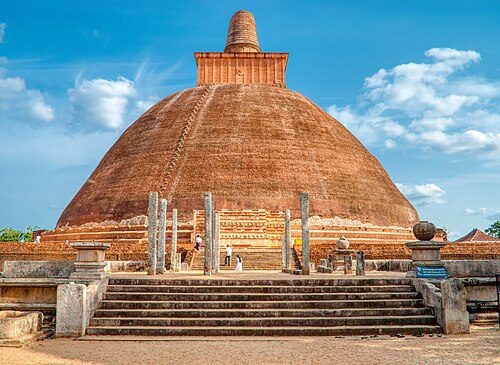
Disclaimer: Image sourced via Google Images. All rights belong to the respective copyright holders. If you are the owner of this image and would like it removed or properly credited, please contact us.
Some Sri Lankan stupas, like those in Anuradhapura, date back to 300–400 BCE, possibly predating Ashoka’s time.
🕊️ Implication: If Buddhism reached Sri Lanka only after spreading from Nepal, how are its monuments older?
7. The Silence of Mainstream Scholars
Many historians brush off Sri Lanka’s claims without serious examination.
- During colonial times, archaeology favored India and Nepal.
- Sri Lankan perspectives were often dismissed or ignored.
🕊️ Provocative thought: If this theory were about Europe or Egypt, would it be taken more seriously?
8. The Kelaniya Temple Legend
The Kelaniya Raja Maha Vihara claims the Buddha visited 5,500 years ago—far earlier than the accepted timeline.
🕊️ Possibility: Could this be a distorted memory of his birth, not just a visit?
9. Missing Buddha Statues in Nepal
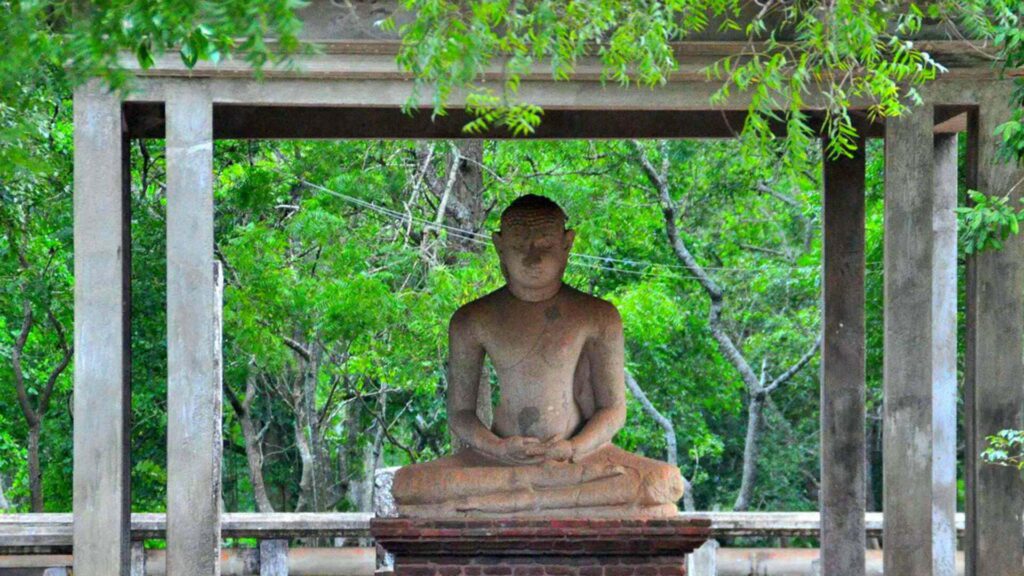
Disclaimer: Image sourced via Google Images. All rights belong to the respective copyright holders. If you are the owner of this image and would like it removed or properly credited, please contact us.
Samadhi Statue Anuradhapura 4th or 5th centuries
- Sri Lanka houses thousands of ancient Buddha statues, some dating to before the Common Era.
- Nepal’s earliest images appear much later.
🕊️ Red Flag: Why does his “birthplace” lack early iconography?
10. A Modern Cover-Up?
- UNESCO protects Lumbini as a World Heritage Site, bringing in billions in tourism.
- Sri Lanka’s civil war (1980s–2000s) disrupted decades of historical research.
🕊️ Conspiracy? Who gains by preserving the Nepal narrative?
Conclusion: A Mystery Worth Exploring
This theory isn’t proven—but neither is Lumbini’s claim beyond dispute.
For spiritual seekers and historical adventurers, this is more than just speculation. It’s a journey into alternative history—and possibly, into the true origin of the Enlightened One.
🧭 Ready to Explore the Hidden Truth?
📍 Visit Kelaniya, Rumassala, and Anuradhapura with our Forbidden History Tour.
📖 Download your free guide: “The Sri Lankan Buddha: 25 Clues You’ve Never Heard.”
Or… dare to debate? Share your thoughts in the comments.
